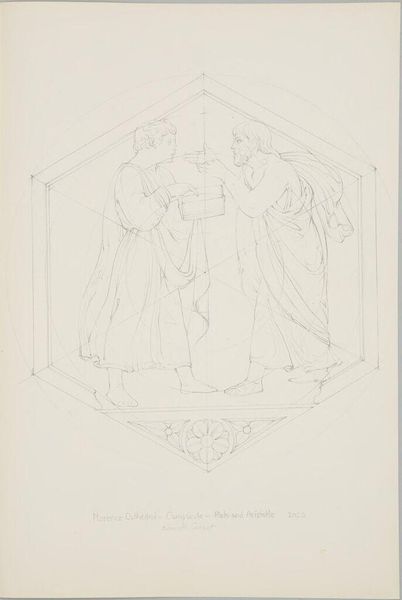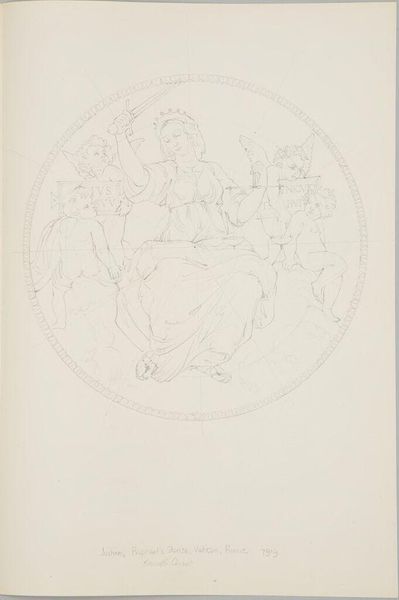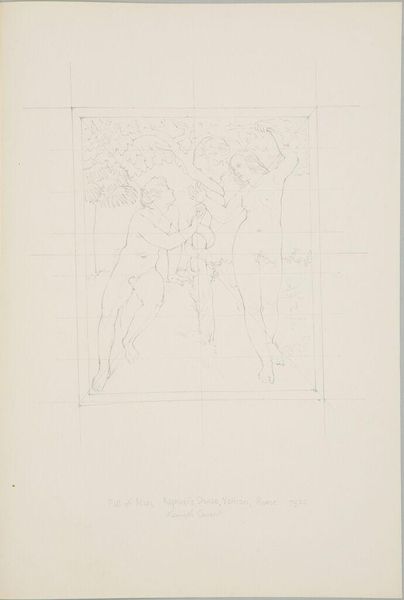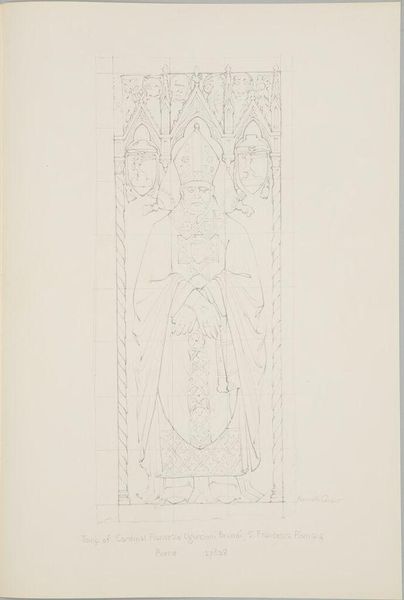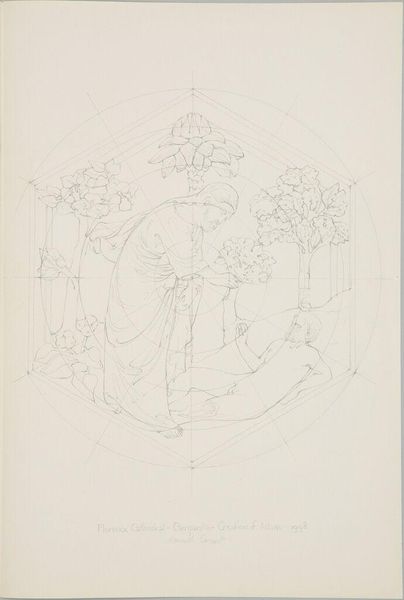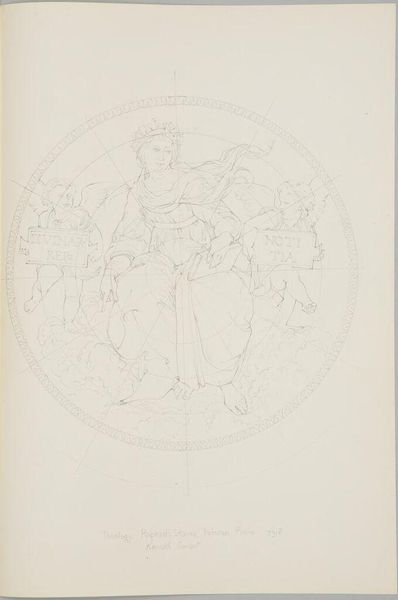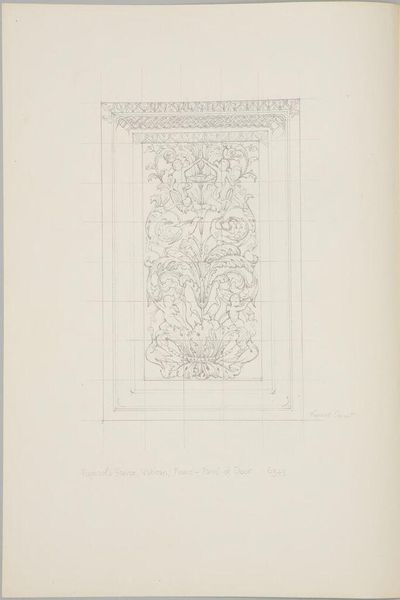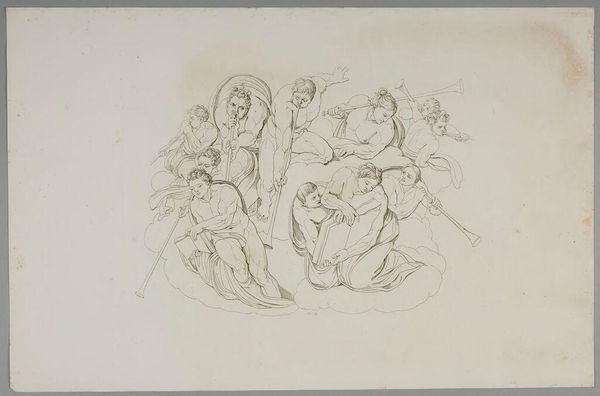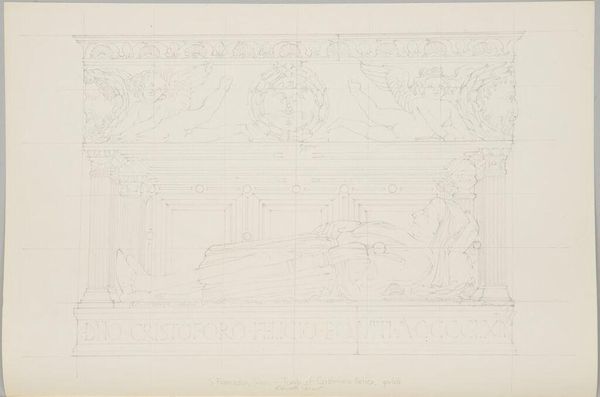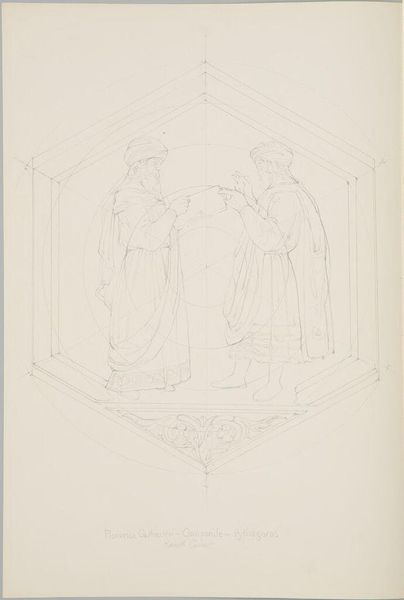
Farming and Spinning, after Giotto and Andrea Pisano, Campanile, Florence Cathedral c. 20th century
0:00
0:00
Dimensions: image: 20.2 cm (7 15/16 in.) sheet: 31.1 x 42.2 cm (12 1/4 x 16 5/8 in.) folded sheet: 31.1 x 21.1 cm (12 1/4 x 8 5/16 in.)
Copyright: CC0 1.0
Curator: This is Kenneth John Conant's pencil study, "Farming and Spinning, after Giotto and Andrea Pisano, Campanile, Florence Cathedral," housed here at the Harvard Art Museums. It’s a delicate rendering. What strikes you first? Editor: The geometric underdrawing. The circle and the hexagon impose a rigid structure on the figures, making me think about the social construction of labor. Curator: Indeed, the Campanile reliefs themselves were deeply embedded in the political and economic fabric of Florence. These activities, farming and spinning, weren’t just practical; they were symbolic representations of a thriving society. Editor: And the gendered division of labor is quite clear, isn't it? A man tilling the land, presumably, while a woman engages in spinning, reinforcing societal expectations. Curator: Precisely, though Conant’s choice to depict it now, so many years later, prompts us to consider how these historical depictions continue to shape and inform our understanding of identity. Editor: Absolutely. It forces us to confront the ways in which art perpetuates or challenges societal norms around work, gender, and power. A sketch with so much to say.
Comments
No comments
Be the first to comment and join the conversation on the ultimate creative platform.
